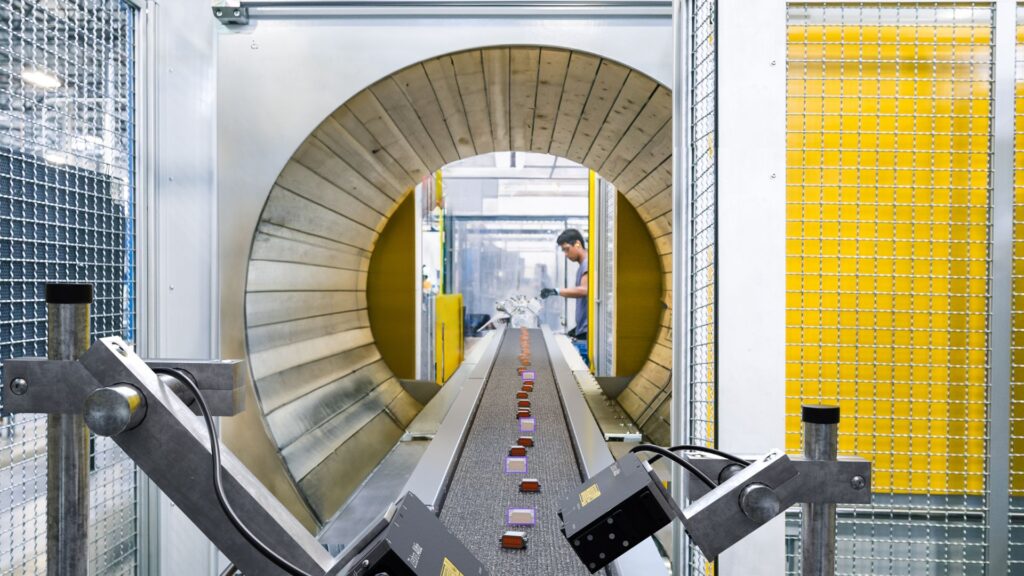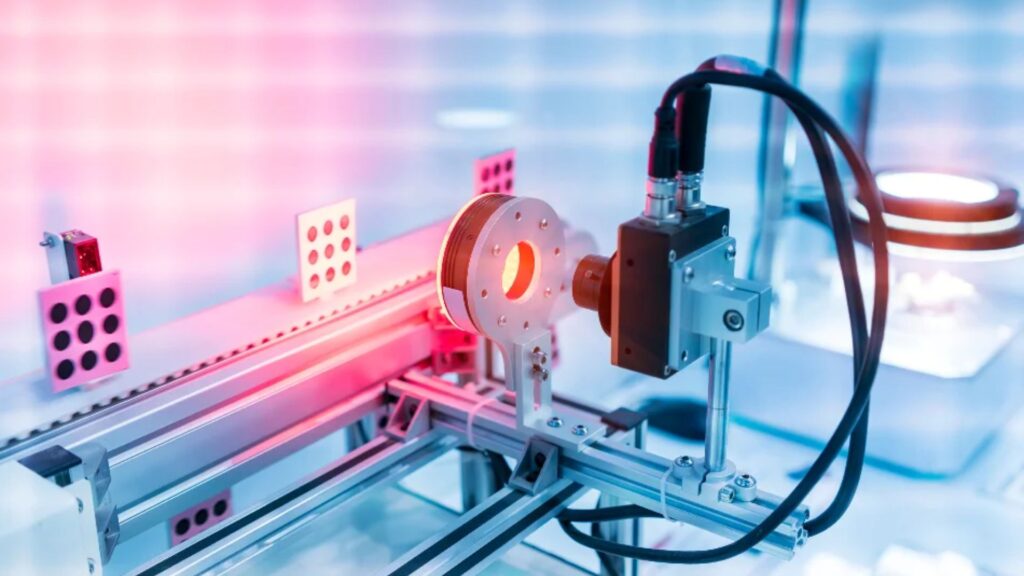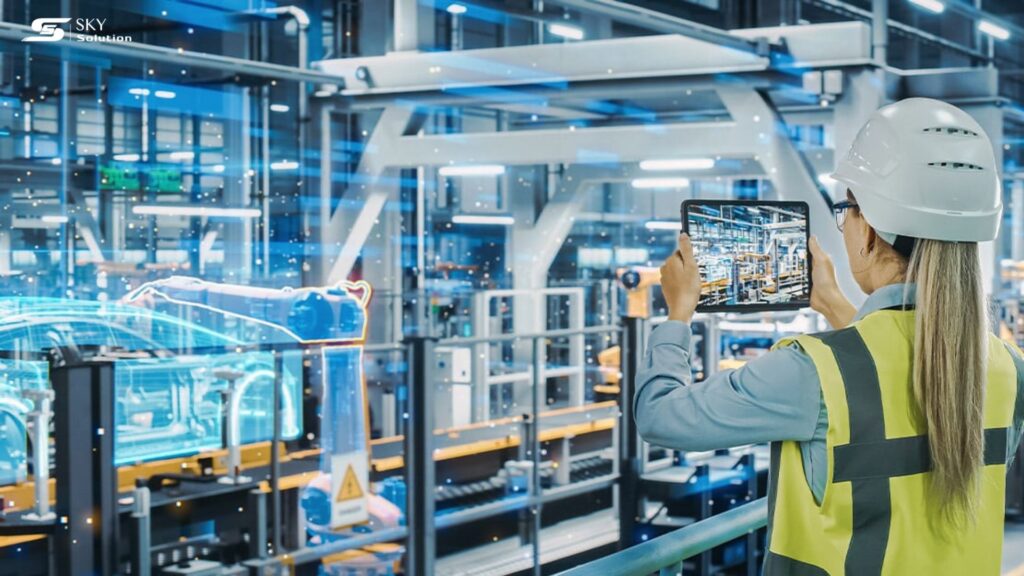In the age of digital transformation, imaging technologies like Computer Vision and Machine Vision are revolutionizing the way businesses replace and enhance human vision in operations. However, many companies still struggle to clearly distinguish Computer Vision vs Machine Vision and apply them correctly in specific business contexts.
Join News Sky Solution to explore the differences between these two technologies, how they work, and discover which one is best suited for your business needs.
An Overview of Computer Vision
What is Computer Vision?
Computer Vision is a field within Artificial Intelligence (AI) that enables computers to extract and interpret meaningful information from visual inputs such as digital images and videos. This technology empowers machines to see, observe, and understand visual data much like humans do, but with the capability to process thousands of images per minute with consistent accuracy.
Computer vision utilizes advanced algorithms and deep learning models to identify patterns, detect objects, and classify visual content across diverse applications. Unlike traditional image processing, computer vision systems can adapt and learn from new data, making them highly versatile for complex visual interpretation tasks. This makes Computer Vision a solid foundation for applications such as facial recognition, autonomous vehicles, defect detection, and more.
The scope of computer vision extends far beyond simple image recognition. It encompasses a sophisticated understanding of visual scenes, enabling systems to interpret context, recognize relationships between objects, and make intelligent decisions based on visual input. This broad applicability makes computer vision crucial in modern AI-driven solutions across multiple industries.

How Does Computer Vision Work?
Computer vision systems handle visual data through multiple phases:
- Image Acquisition: Collecting images or video footage via cameras or specialized sensors.
- Preprocessing: Enhancing data quality through noise reduction, normalization, and resizing.
- Feature Extraction: Identifying key elements such as edges, textures, or shapes.
- Pattern Recognition: Using machine learning models to classify or detect objects.
- Decision Making: Interpreting the results to perform actions or provide insights.
These systems often utilize cloud computing for large-scale data processing and can analyze synthetic or real images, offering high-level understanding beyond simple image capture.
Read more: How to Start a Computer Vision Project
An Overview of Machine Vision
What is Machine Vision?
Machine vision (MV) is a technology primarily used in industrial and manufacturing environments to automate inspection, measurement, and guidance tasks. It combines hardware components like cameras, lenses, lighting, and sensors with software to capture and analyze images for specific, predefined purposes such as quality control, defect detection, or barcode reading.
Unlike computer vision, machine vision is tightly integrated into larger machine systems and relies on real-time image capture to make pass/fail or go/no-go decisions quickly and reliably. It is optimized for speed, precision, and repeatability in controlled environments, making it indispensable for automation in production lines.

How Does Machine Vision Work?
Machine vision operates through a sequence of steps:
- Image Capture: Using specialized cameras and lighting setups to acquire images.
- Image Processing: Applying algorithms for filtering, edge detection, or segmentation.
- Analysis: Comparing captured images against predefined standards or models.
- Output: Generating actionable results such as accept/reject signals or robotic guidance commands.
The system’s focus is on executing specific inspection or measurement tasks with minimal human intervention, often in harsh or high-speed industrial settings.
Differences Between Machine Vision and Computer Vision
The fundamental distinction between machine vision and computer vision lies in their scope, application focus, and technological approach. Machine vision concentrates on specific, predefined industrial tasks with rigid parameters, while computer vision encompasses a broader range of AI-powered visual interpretation capabilities across diverse applications.
| Aspect | Computer Vision | Machine Vision |
| Scope | The broad AI field focuses on interpreting visual data | Narrower focus on industrial automation tasks |
| Application Areas | Facial recognition, autonomous driving, and retail | Industrial inspection, assembly guidance, and defect detection |
| Data Input | Real-life and synthetic images/videos, stored data | Real-time images captured by cameras in production |
| Processing Complexity | High, involving deep learning and adaptive models | Lower, using predefined algorithms for specific tasks |
| Hardware Dependency | Can operate without dedicated cameras | Requires integrated camera systems and sensors |
| Output | Detailed insights, predictions, and visual reasoning | Binary or categorical decisions (pass/fail) |
| Flexibility | High adaptability across industries and tasks | Limited to controlled environments and tasks |
Relationship Between Machine Vision and Computer Vision
Machine vision can be understood as a specialized subset of the broader computer vision field. While computer vision encompasses the entire domain of automated image analysis and interpretation, machine vision represents its practical application in industrial and manufacturing contexts.
The relationship between these technologies is complementary rather than competitive. Computer vision provides the theoretical foundation and algorithmic frameworks that enable machine vision applications. Advanced computer vision techniques, including deep learning and neural networks, are increasingly integrated into machine vision systems to enhance their capabilities and adaptability.
Modern industrial applications often benefit from combining both approaches. Traditional machine vision provides the reliability and speed required for production environments, while computer vision techniques add intelligence and adaptability for handling complex or variable conditions. This convergence enables more sophisticated automated inspection systems that can learn from experience while maintaining industrial-grade performance standards.

The evolution of both fields continues to blur traditional boundaries, with machine vision systems incorporating more AI-driven capabilities and computer vision applications being optimized for industrial deployment. This synergy drives innovation in automated visual inspection, quality control, and intelligent manufacturing systems.
Which Do You Need? A Practical Decision-Making Guide
Selecting between machine vision and computer vision depends on specific operational requirements, environmental conditions, and business objectives. Understanding these factors helps organizations make informed technology investment decisions.
Choose Machine Vision When:
- Operating in controlled industrial environments with consistent lighting and positioning
- Requiring high-speed, repetitive inspection tasks with predetermined criteria
- Needing reliable, predictable performance for quality control applications
- Working with structured data and well-defined inspection parameters
- Prioritizing immediate ROI through proven, specialized solutions
Choose Computer Vision When:
- Dealing with variable environmental conditions or unstructured data
- Requiring adaptive learning capabilities for evolving inspection criteria
- Implementing complex scene understanding or contextual analysis
- Developing applications across multiple industries or use cases
- Needing flexibility to handle new product types or inspection requirements
In many cases, a hybrid approach combining both technologies can deliver optimal results, balancing automation speed with intelligent analysis.
The Future: The Convergence of Computer Vision and Machine Vision
The future of visual intelligence lies in the convergence of computer vision and machine vision technologies, creating more powerful and versatile automated systems. This integration combines the reliability and speed of traditional machine vision with the adaptability and intelligence of modern computer vision approaches.
Emerging trends include the development of edge computing solutions that bring AI processing capabilities directly to industrial cameras and sensors. This advancement enables real-time decision-making while reducing latency and bandwidth requirements. Additionally, the integration of 5G connectivity will facilitate more sophisticated remote monitoring and control capabilities.
Artificial intelligence and machine learning continue to enhance both fields, with neural networks becoming more efficient and capable of running on industrial hardware. This evolution enables machine vision systems to incorporate learning capabilities while maintaining the robustness required for production environments.
The proliferation of smart manufacturing and Industry 4.0 initiatives drives demand for more intelligent visual inspection systems. These applications require the precision of machine vision combined with the adaptability of computer vision to handle diverse product lines and changing quality requirements.
Future developments will likely focus on creating unified platforms that seamlessly integrate both technologies, providing organizations with flexible solutions that can adapt to changing needs while maintaining industrial-grade performance standards.
Conclusion
Understanding the critical difference between machine and computer vision is paramount for any technology leader implementing visual solutions. While machine vision excels in precise, real-time industrial tasks, computer vision delivers expansive, AI-driven power for complex visual interpretation. This core distinction guides the path to effective automation and analysis.
Sky Solution delivers customized Computer Vision solutions tailored to your business needs. Contact us today to discover cutting-edge technology solutions that drive innovation and efficiency!

